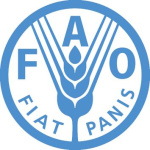- Industri: Agriculture
- Number of terms: 87409
- Number of blossaries: 0
- Company Profile:
Established in October 1945 with the objective of eliminating hunger and improving nutrition and standards of living by increasing agricultural productivity, FAO coordinates the efforts of governments and technical agencies in programs for developing agriculture, forestry, fisheries, and land and ...
A translucent, white, solid hydrocarbon with a low melting point. Paraffin is used as an embedding medium to support tissue for sectioning for light microscopy observation.
Industry:Biotechnology
A transposable element formed when two identical or nearly identical transposons insert on either side of a non-transposable segment of DNA, such as the bacterial transposon Tn5.
Industry:Biotechnology
A transposable element that moves via reverse transcription (i.e., from DNA to RNA to DNA) but lacks the long terminal repeat sequences.
Industry:Biotechnology
A transposable element that moves via reverse transcription (i.e., from DNA to RNA to DNA) but lacks the long terminal repeat sequences.
Industry:Biotechnology
A transposable or movable genetic element. A relatively small DNA segment that has the ability to move (mobile genetic element) from one chromosomal position to another, e.g., Tn 5 is a bacterial transposon that carries the genes for resistance to the antibiotics neomycin and kanamycin and the genetic information for insertion and excision of the transposon.
Industry:Biotechnology
A triplet of nucleotides in a tRNA molecule that pairs with a complementary triplet of nucleotides, or codon, in an mRNA molecule during translation.
Industry:Biotechnology
A tube of a porous material, having an internal diameter of a fraction of a millimetre, and so its ratio of surface area to internal volume is very large. This has had two types of application. Firstly, hollow fibres can be used as filters. Because they have a huge surface area, they take much longer to clog up than normal filters. Secondly, they are used in the hollow fibre bioreactor, in which cells are kept inside the hollow, porous fibres, and the culture medium is circulated outside the reactor. The fibres let nutrients in and products out (as they are in solution), but do not allow the passage of cells. Hollow fibre bioreactors are very effective for maintaining mammalian cells in culture because they have a very large surface area for the cells to grow on without needing a large reactor to hold them, and because the nutrient reaching the cells can be kept fresh. The reactor also provides an easy way of removing the product that the cells are making: such as monoclonal antibodies. Hollow fibre reactors are less use when the cells themselves have to grow, because it is hard to get at the inside of the fibre to remove surplus cells.
Industry:Biotechnology
A tube within the phloem tissue of a plant, and composed of joined sieve elements.
Industry:Biotechnology
A two-plasmid system for transferring cloned genes to plant cells. The cloning vector has a T-DNA segment that contains cloned genes. After introduction into <i>Agrobacterium tumiefasciens</i>, the cloning vector DNA undergoes homologous recombination with a resident disarmed Ti plasmid to form a single plasmid carrying the genetic information for transferring the genetically engineered T-DNA region to plant cells.
Industry:Biotechnology
A two-plasmid system in <i>Agrobacterium</i> <i>tumefaciens</i> for transferring into plant cells a segment of T-DNA that carries cloned genes. One plasmid contains the virulence gene (responsible for transfer of the T-DNA), and another plasmid contains the T-DNA borders, the selectable marker and the DNA to be transferred.
Industry:Biotechnology
